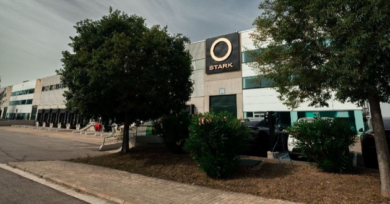PWC – Bighorn, Fire Island Re-open; Upper Mississippi Threatened
While they already were on the list of park areas expected to reopen to PWC, the news that Bighorn Canyon National Recreation Area, which straddles the Montana and Wyoming border, and Fire Island National Sea Shore, in New York, had actually done so is yet another welcome sign of the continuing trend in favor of PWC access.
In 2002, the National Park Service was required by a court settlement to restrict PWC use in 21 park units pending the results of scientific studies regarding the vessels’ impact.
However, PWC had been banned at Bighorn since April 20, 2000. Following three years of environmental assessments, as well as consideration of the socioeconomic impact of the ban, Bighorn reopened its waters on June 1, just in time for the summer 2005 season.
Like many parks that have reopened, PWC are allowed access to the vast majority of park waters.
“We would like to thank everyone that sent comments to the National Park Service,” read a statement posted on the American Watercraft Association’s website. “Without your direct action, the no access crowd would have continued to drag out a useless process. We hope that everyone will continue to make their thoughts known to the NPS in the future to open additional waterways throughout the United States. This was a victory for you, the good people.”
The process to evaluate PWC use at Fire Island National Seashore in New York concluded after three years worth of studies. The ruling to reopen Fire Island to PWC use was effective immediately upon being published in the Federal Register on July 6.
The environmental assessment study at Fire Island concludes that PWC are an appropriate boating activity for the National Seashore.
“Today another national park has reaffirmed that personal watercraft are among the cleanest and quietest motorboats on the water,” Maureen Healey, Executive Director of the Personal Watercraft Industry Association (PWIA), said while announcing the opening of Fire Island National Seashore. “In every single instance – 15 to date – where an environmental assessment has measured the impact of PWC on a body of water where motorized boating is permitted, these studies conclude that PWCs should be allowed.”
Fire Island National Seashore is the ninth unit to complete this study and now welcomes personal watercraft back into the park. Five other national park units are in the final stages of the rulemaking process to determine if PWC will be allowed back into those parks.
UPPER MISSISSIPPI
Most recently, the U.S. Fish and Wildlife Service proposed a Comprehensive Conservation Plan for the Upper Mississippi River National Wildlife and Fish Refuge. And while the AWA acknowledged the need for flexibility on public land issues, the organization wasted no time in calling for members to once again get involved.
Of most concern to the AWA and its members is the fact that three of the four alternatives proposed by the plan would dramatically change personal watercraft access to these public waters for the next 15 years. More troubling still is that the “preferred alternative” includes provisions which will permanently close over 14,500 acres of water to all motorized craft by creating 15 new “electric only” zones. Also included are provisions that significantly restrict beach access on currently open beaches along the river, including closing many during the peak season from April 1 to September 15, and granting refuge managers the authority to close public areas at their discretion.
Restrictions on hunting, fishing, and camping also are proposed.
“Personal watercraft owners need to be heard from on this basic ‘freedom of access’ issue,” reads an AWA statement on the potential closure. “Some people will tell you: ‘it’s only 14,500 acres… just six-percent.’ The AWA thinks that’s six-percent too much. Such talk is the clear route to the slippery slope of a total prohibition of PWC in the refuge.”
The AWA urges all who share their concerns about the pending plan to take action. A link has been provided to the Grassroots Activism page on the AWA Web site (www.awahq.org). Written comments can also be directed to the Upper Mississippi River National Wildlife and Fish Refuge, Attn: CCP Comment, Room 101, 51 East Fourth Street, Winona, MN 55987.




